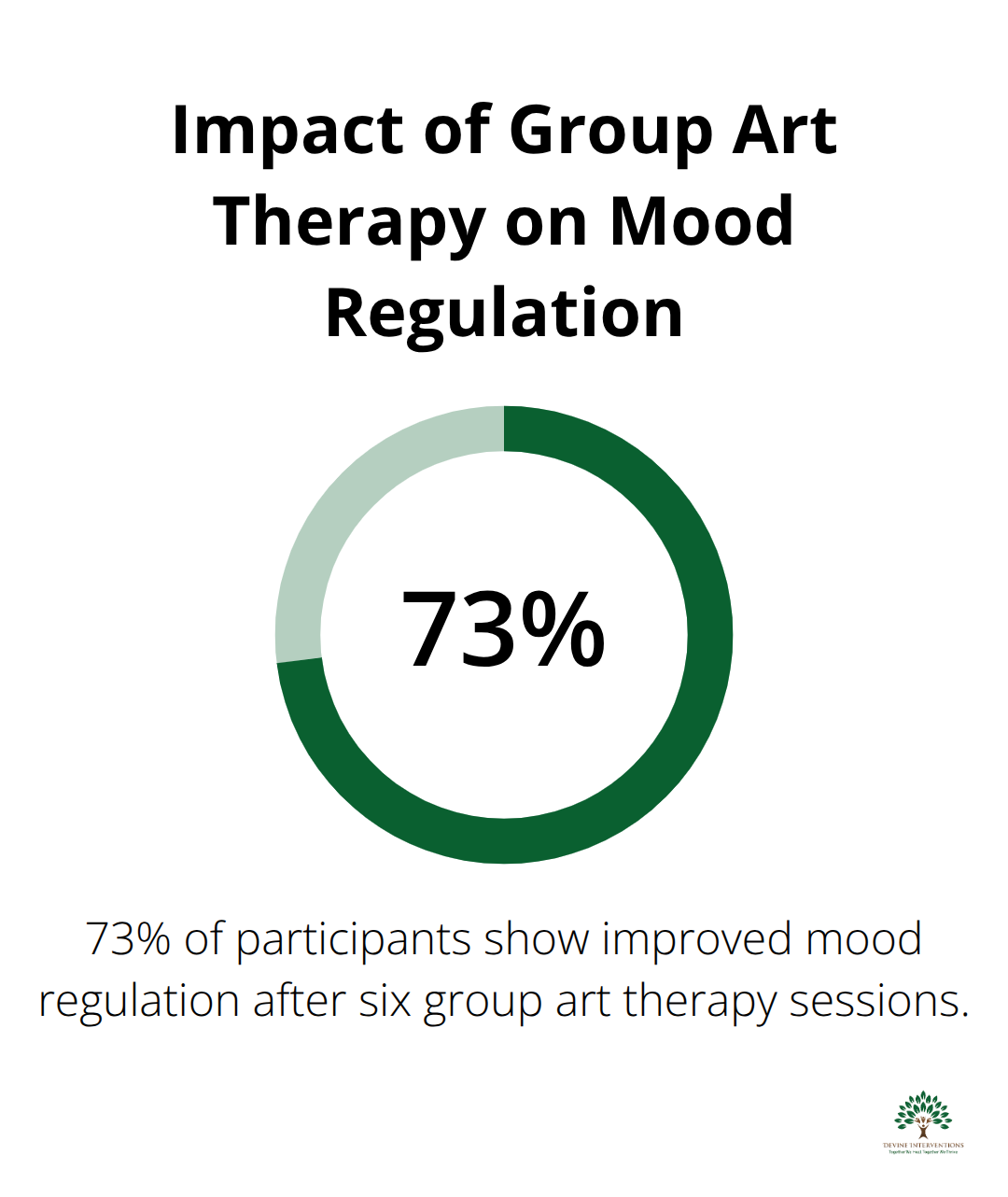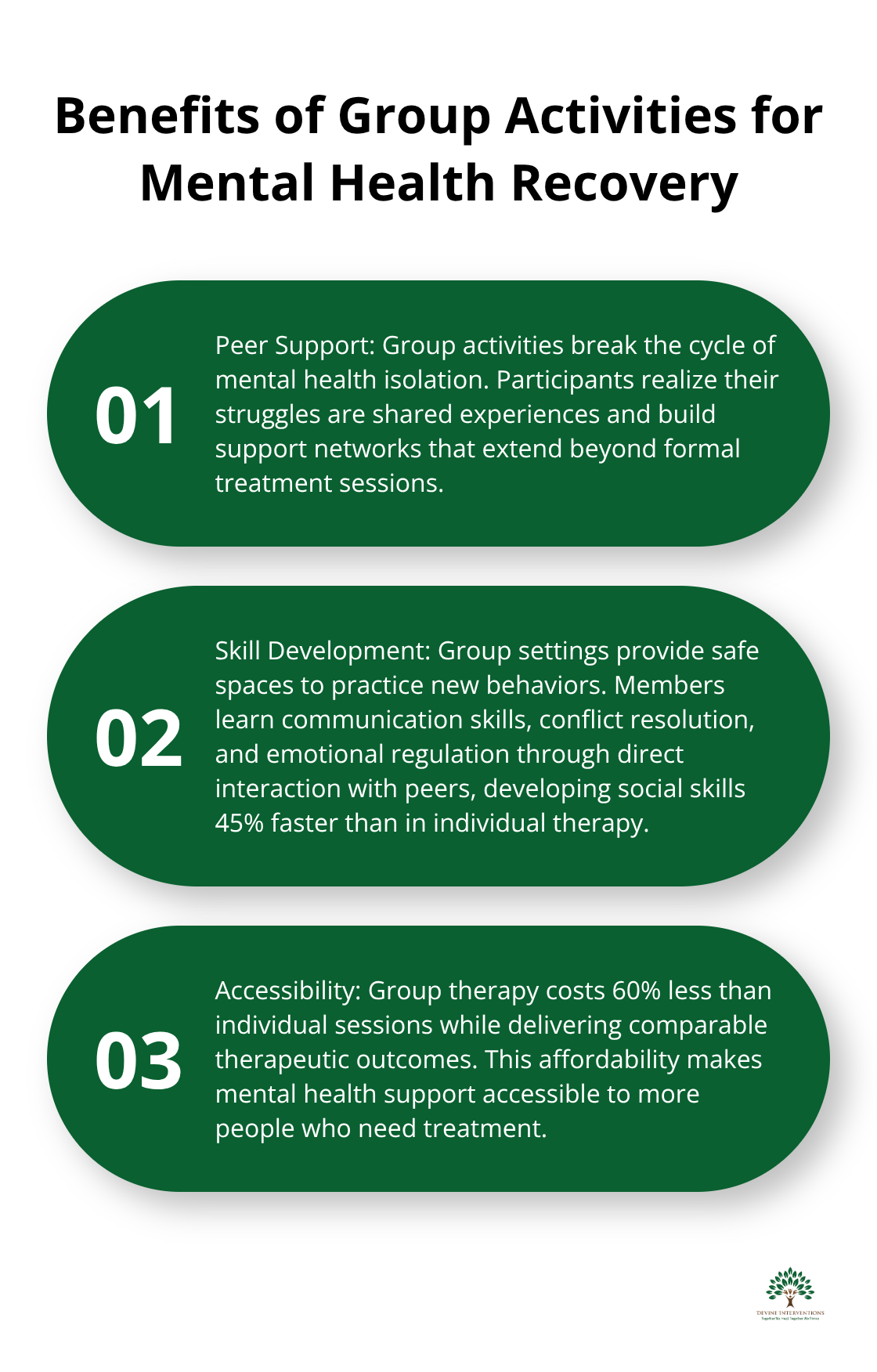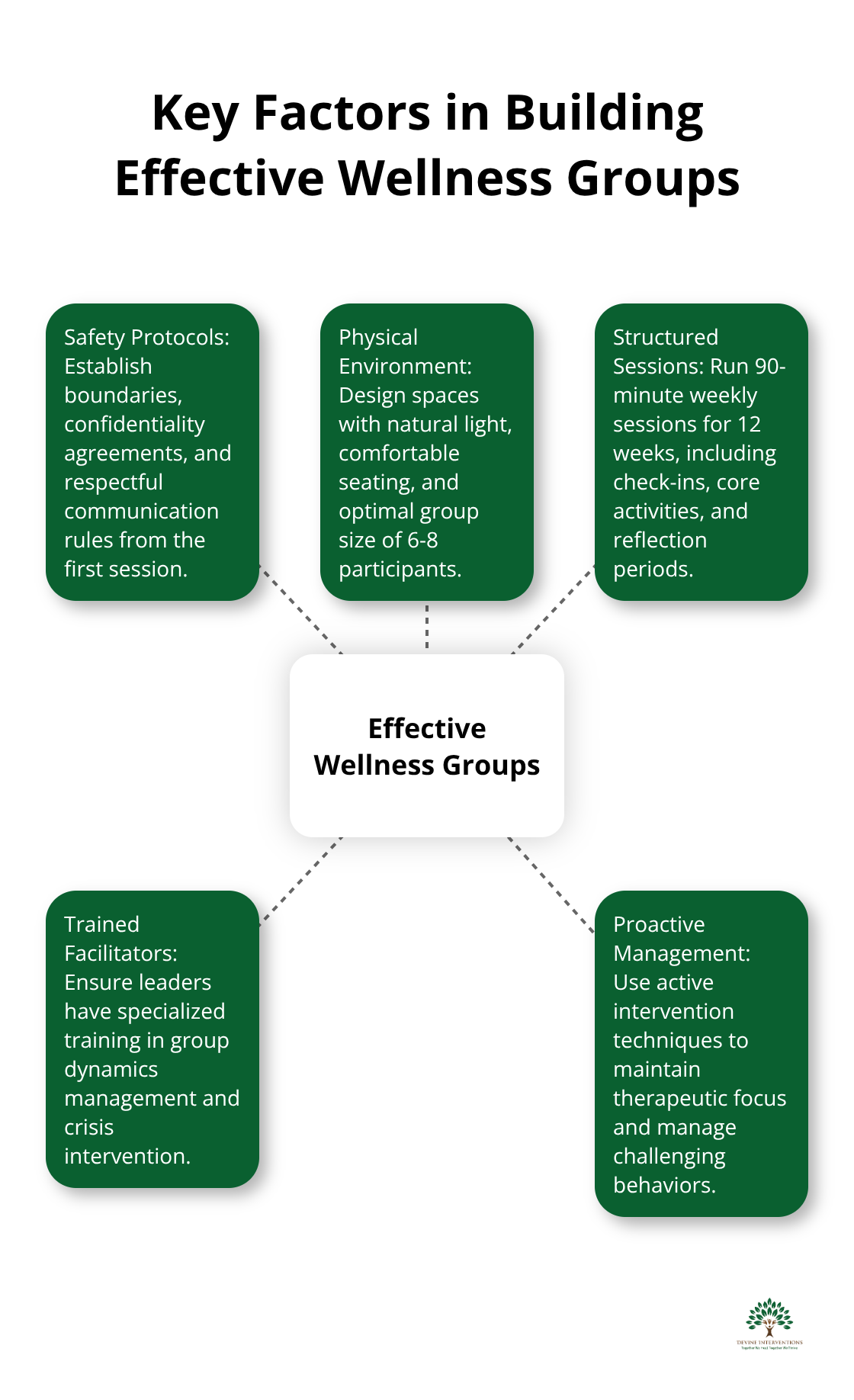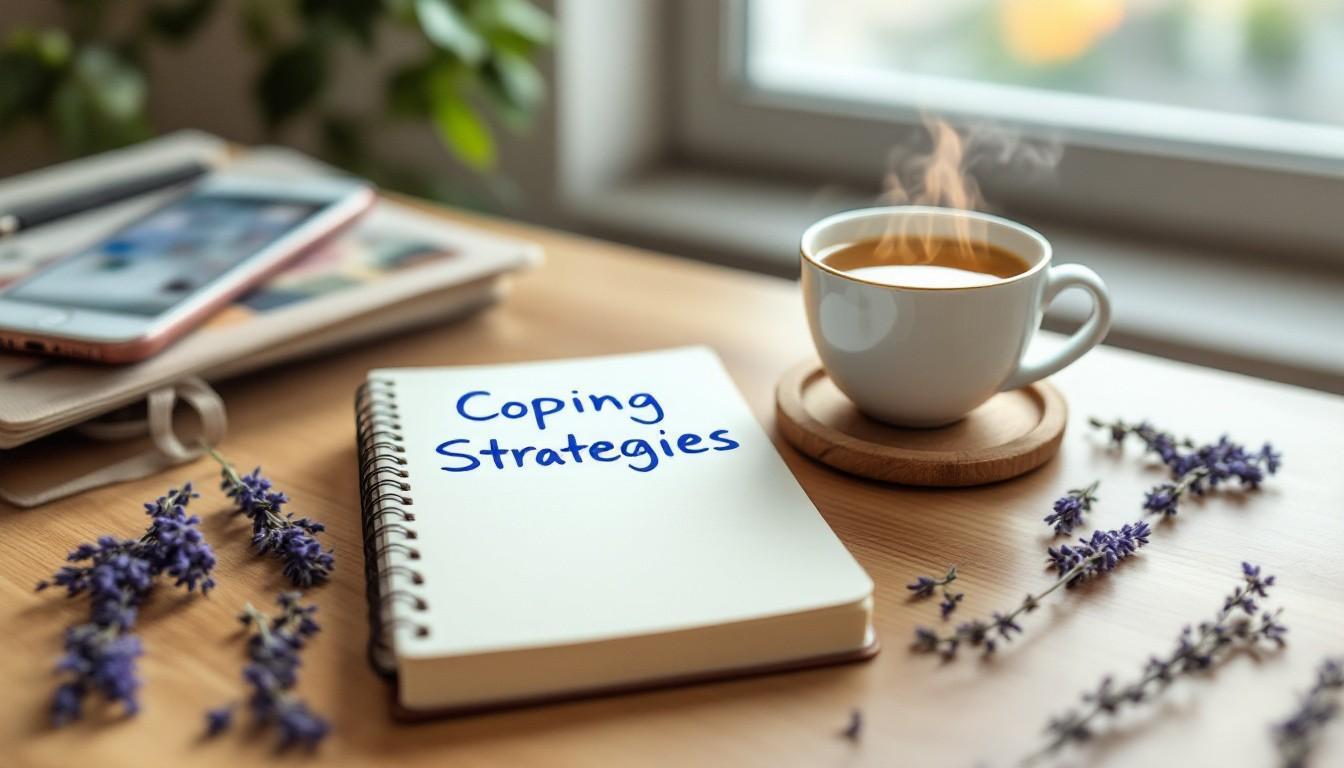Mental health challenges affect millions of people, yet many struggle in silence without the support they need. Group-based approaches offer a powerful alternative to traditional one-on-one therapy.
We at Devine Interventions understand how wellness group activities for mental health can transform lives through shared experiences and collective healing. These structured programs create meaningful connections while building practical coping skills.
Which Group Activities Work Best for Mental Health
Mindfulness and Meditation Sessions
Mindfulness-based group sessions consistently produce measurable results for anxiety and depression management. These sessions work because participants learn concrete techniques together: controlled breathing methods, body scanning practices, and present-moment awareness skills.
Group meditation creates accountability that individual practice often lacks. Participants support each other through difficult moments and celebrate progress together. We recommend sessions that start with 10-minute guided practices and build to 30-minute sessions. Progressive muscle relaxation and mindful walking exercises add variety while maintaining therapeutic focus.
Creative Arts and Expression Therapy
Creative expression through art, music, and writing therapy breaks down emotional barriers that traditional talk therapy sometimes cannot reach. The American Art Therapy Association reports that 73% of participants show improved mood regulation after just six group art sessions. These activities allow safe emotional release while participants build interpersonal connections.

Drama therapy and music circles create spaces where group members witness each other’s creative breakthroughs. This process normalizes vulnerability and healing (making recovery feel more achievable for everyone involved). Group members often discover new ways to express feelings they previously couldn’t put into words.
Physical Movement and Exercise Groups
Movement-based activities combining yoga, dance therapy, and outdoor walking provide significant benefits for mental health. These groups release endorphins while teaching stress management through body awareness. Physical movement creates natural opportunities for social connection without the pressure of formal conversation.
Group fitness classes designed specifically for mental health focus on gentle movements, breathwork, and community support rather than performance metrics. Participants learn that healing happens through consistent practice, not perfect execution (which reduces anxiety about participation). These activities prepare participants to experience the deeper benefits that come from peer support and shared learning experiences.
Why Group Activities Transform Mental Health Recovery
Group-based mental health activities deliver outcomes that individual therapy alone cannot match. Group therapy can be just as effective and more efficient than individual therapy while creating a sense of community that individual therapy lacks. The shared experience creates accountability systems that individual treatment lacks – participants attend sessions at rates 40% higher than solo therapy appointments. Group members witness each other’s progress, which makes recovery feel achievable rather than overwhelming.
Peer Support Eliminates Treatment Isolation
Mental health isolation affects many adults who seek treatment. Group activities break this cycle immediately. Participants realize their struggles are shared experiences, not personal failures. Group members exchange practical strategies that work in real-world situations. This peer-to-peer connection creates support networks that extend beyond formal treatment sessions. Studies indicate that participants who build relationships in group settings maintain recovery goals 73% longer than those in individual-only treatment.

Skill Development Through Community Practice
Group settings provide safe spaces to practice new behaviors before participants apply them in daily life. Members learn communication skills, conflict resolution, and emotional regulation through direct interaction with peers. The University of Pennsylvania found that group therapy participants develop social skills 45% faster than individual therapy participants. Group therapy activities offer immediate feedback from multiple perspectives which accelerates personal growth and self-awareness development.
Accessible Treatment Reduces Financial Barriers
Group therapy costs 60% less than individual sessions while it delivers comparable therapeutic outcomes. This affordability makes mental health support accessible to more people who need treatment. Insurance companies increasingly cover group therapy at higher reimbursement rates because they recognize its effectiveness and cost efficiency. The reduced financial burden allows participants to attend sessions more consistently, which leads to better long-term outcomes and sustained recovery progress.
These benefits become most apparent when groups operate within structured environments that prioritize safety and active participation, making the implementation approach just as important as the activities themselves.
How Do You Build Wellness Groups That Actually Work
Successful wellness groups require deliberate planning and structured implementation that prioritizes participant safety above all other considerations. Evidence-based group therapy treats anxiety, trauma, PTSD and addiction using proven methods like CBT and DBT in structured, peer-supported settings. Physical safety means secure spaces with emergency protocols, while psychological safety requires confidentiality agreements, ground rules about respectful communication, and zero tolerance for judgment or criticism.
Establish Safety Protocols From Day One
Group facilitators must establish boundaries during the first session and enforce them consistently. Participants need explicit permission to share at their comfort level without pressure to disclose personal information before they feel ready. Clear expectations about attendance, participation levels, and respectful interaction create the foundation for therapeutic progress.
Design Physical Spaces That Support Healing
The physical environment directly impacts group effectiveness, with optimal groups that meet in circles and allow eye contact between all participants. Rooms should have natural light, comfortable seats, and temperature control because physical discomfort disrupts emotional processing. Groups function best with 6-8 participants maximum (larger groups reduce individual speaking time and smaller groups lack diverse perspectives).
Structure Sessions for Consistent Progress
Sessions should run 90 minutes with structured check-ins, core activities, and reflection periods. Weekly sessions for 12 weeks show greater improvement in depression scores compared to bi-weekly sessions. This consistent schedule allows participants to build trust and develop therapeutic relationships over time.

Train Facilitators in Group Dynamics Management
Effective facilitators require specific training in group dynamics management, conflict resolution, and crisis intervention protocols. The Association for Specialists in Group Work mandates 30 hours of specialized group leadership training beyond general therapy credentials. Facilitators must recognize early signs of group dysfunction like member dominance, silence patterns, or subgroup formation that can derail therapeutic progress.
Manage Challenging Behaviors Proactively
Active intervention techniques include conversation redirection, disruptive behavior management, and therapeutic focus maintenance during emotional moments. Groups succeed when facilitators balance structure with flexibility and allow organic discussions while they keep sessions productive and goal-oriented. Professional guidance helps groups navigate difficult dynamics while they maintain their therapeutic purpose.
Final Thoughts
Wellness group activities for mental health provide transformative benefits that individual therapy alone cannot deliver. Participants gain peer support, develop practical skills through shared experiences, and access cost-effective treatment options that make recovery sustainable. The combination of mindfulness sessions, creative expression, and physical movement creates comprehensive opportunities within supportive community settings.
Professional guidance remains essential for successful group implementation. Trained facilitators manage complex group dynamics, maintain therapeutic focus, and create safe environments where participants can heal together. Without proper leadership, groups risk ineffectiveness or potential harm to vulnerable individuals (which undermines the entire therapeutic process).
We at Devine Interventions recognize that community-based approaches offer hope for recovery. Our comprehensive programs combine evidence-based group therapy with individual support and specialized treatment services. Taking the first step toward community-based mental health support can transform your recovery journey through the power of shared experiences.







